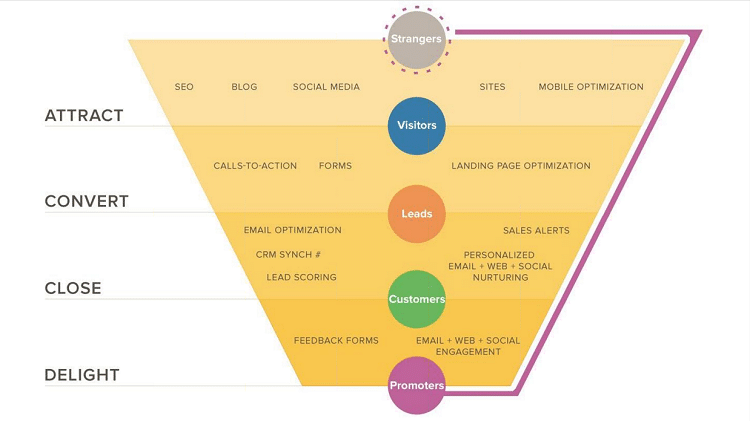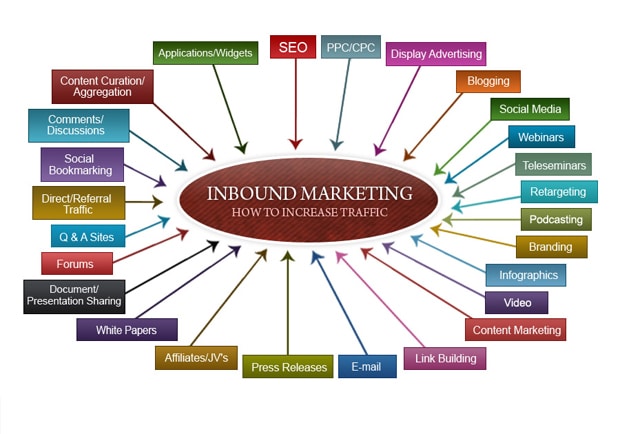Statistics show that inbound marketing can be one of the best ways to attract new customers or clients to your business. Because inbound marketing focuses on putting the right information in front of your audience whenever they need it, inbound marketing tactics can bring you customers more prepared to make a purchase. It doesn’t matter what the website design looks like or what the pricing is.
But inbound marketing isn’t as easy as creating a few blog posts or updating your social media pages. There needs to be a clear strategy behind each piece of content you create. If you’re ready to create an inbound marketing strategy for your business, here are a few key steps to take and learn.
5 Tips for Your Inbound Marketing Strategy
1. Create a Buyer Persona
Before you can begin any inbound work, you need to identify what is your target audience. Instead of struggling to create messages and content that appeals to the masses, you’ll want to create specific marketing materials that speak directly to your audience. Creating a buyer persona can help you identify who you should be marketing to, companies, merchants, or agents. When creating your buyer persona, get as descriptive as possible. Identify the basic demographics, including their age group, gender, family size, and spending habits, but also become specific. Outline what they fear, what they struggle with and what problems they have. Know their income, education level, and what kind of language they use. If they went a specific university, be sure to include that. Don’t utilize one versus the other, utilize all information to it’s fullest potential for the most potential and effective use of your time.
Keep your complete buyer persona close while creating your messaging, marketing materials, and determining the best way to send them out. You can use these to your advantages when it comes to different jobs or campaigns. You can show off your persona by doing telemarketing.
2. Establish Your Goals
Know what you hope to accomplish with your inbound marketing and set your goals accordingly, big or small. You should have one overall goal, such as increasing your number of leads or improving sales for a particular service or product. You can then include other goals that revolve around the larger goal. This will give you more to measure and a better indication of how well your inbound marketing strategy works. Whatever works for you make sure you put that on the books.
Be sure that your goals are specific, actionable, measurable and everything in between. Properly detailing exactly what your goals are will help you determine whether or not they’ve been achieved, this is also great for comparison and measuring future trends. Set due dates for the goals to help you stay on track and be sure to replace an accomplished goal with a new achievement.
3. Understand the Inbound Funnel

The inbound funnel says that your audience must become aware of your brand, evaluate how your products and services can help solve their problem, and then decide to make a purchase. These three different levels will require different tools or forms of content.
When creating your inbound marketing strategy, you need to consider what stage the piece of content fits within. Social media posts, entertaining videos, blog posts, and infographics are all examples of content that is popular in the awareness phase. These pieces help larger audiences understand your brand and what you can provide.
In the evaluation phase of the inbound funnel, you need to focus on educating your audience. Webinars, slide shows, brochures, case studies, and FAQ sheets are all great examples of inbound content that can be used on audience members in the evaluation stage of the funnel.
Finally, the purchase phase of the inbound funnel includes pieces of inbound content that encourage audience members to buy. Customer reviews, testimonials, product descriptions, and tutorials may be used at the purchasing phase of your inbound funnel.
4. Create a Lead Nurturing Process
Your lead nurturing process will typically relate closely to the inbound funnel. In order to push an audience member through the inbound funnel, you will need to continuously send them the right information to push them closer and closer to making a sale. It’s just in the job description.
At the top of your inbound funnel, your lead nurturing process should focus on attracting the right leads and bringing them to your site or introducing them to your content. You should answer generic questions, provide interesting and exciting content, and find ways to get noticed by your target audience. It’s a methodology of sorts.
As you continue to create content, you need to consider how it will influence your audience to move deeper through the inbound funnel. By having a strong lead nurturing process, you can send the right emails, point your audience to the right blog posts, or provide them with the information they need to move on to the next process.
When creating your lead nurturing process, you need to consider that your audience will move through the funnel at different rates. Have multiple touch points for your audience throughout the different phases in case they are slower to move through the funnel to making a purchase than other customers. Define what you really want them to see.
5. Track and Measure
As with all marketing, you also need to track and measure your results. Tracking who is responding to your inbound marketing tactics and who is not can help you develop a more targeted strategy that will bring you better results.
Identifying appropriate KPIs, or key performance indicators, will help you understand how your inbound marketing strategy is helping you reach your goals. The KPIs you select to measure should reflect back to the major goal and smaller goals you created early in your strategy development.
Your inbound marketing strategy may take the time to catch on. Make sure to give it enough time to take effect. However, be sure you’re always looking for mistakes, red flags, or gaps that may cause your audience to leave the inbound funnel. If you need to make changes, make them as soon as you recognize there may be a problem.
The right inbound marketing strategy will help your business attract the right leads and convert them into customers. These five tips will help you create an inbound marketing strategy that attracts the right customers, educates them on your products or services, and encourages them to make a purchase from your business or businesses. You can probably write a book.
Many agencies will not follow these resources that can bring them success. You don’t need a certification or special software to make your agency an icon, although it does help. You don’t have to be Charlotte London– You don’t have to be from Dallas, Canada, or Sydney, Australia, you can be your own consultant, your own specialist. Make a checklist and utilize these tips. Make your company or system the way that you want.
What successes have you found with your inbound marketing strategy? Do you have any tips you would have included on this list? Inbound vs outbound? Can you tell the difference? Share your inbound marketing experience, strategies, platform, and methods with us in the comments below!

